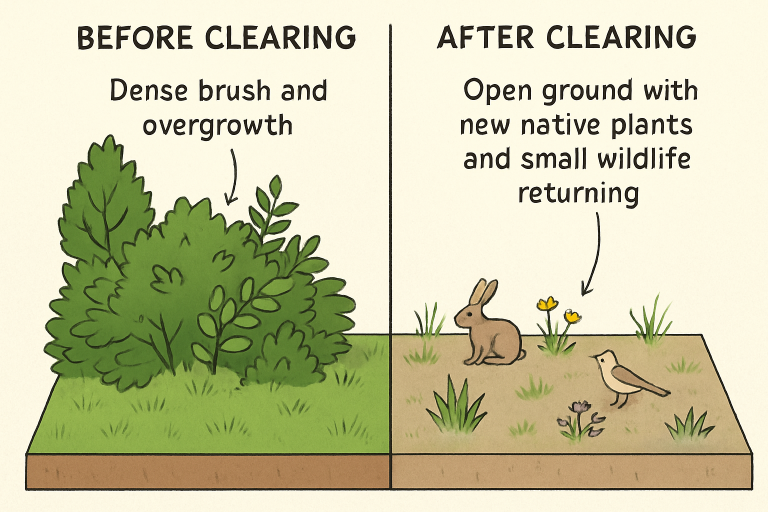Key Takeaways
- Pedestrian safety is an urgent concern across urban and rural environments, with rising statistics prompting increased attention.
- Distraction, limited visibility, inadequate infrastructure, and impaired driving increase pedestrian risk.
- Practicing simple, practical strategies—like obeying walk signals and staying attentive—can significantly reduce accident chances.
- New technologies and thoughtful city planning are making significant strides in protecting those on foot.
- Research and guidance from trusted national agencies inform better policies and public awareness campaigns.
Table of Contents
- Rising Concerns in Pedestrian Safety
- Primary Risk Factors for Pedestrians
- Urban Trends and Common Missteps
- Designing Safer Environments
- Technology and Pedestrian Protection
- Tips to Reduce Your Risk
- Steps Communities Are Taking
- What to Do If You Are Involved in an Accident
Rising Concerns in Pedestrian Safety
Across neighborhoods, city centers, and the edges of countless rural roads, people are walking more than ever, often for health, environmental, or economic reasons. However, this increased foot traffic comes alongside an alarming rise in pedestrian accidents. Recent studies by the Centers for Disease Control and Prevention paint a clear picture: over 7,000 pedestrians lost their lives in traffic crashes in the United States in 2020 alone, and many more suffered life-changing injuries. These numbers highlight why understanding safety strategies and knowing your rights, primarily through consultation with a personal injury lawyer in Atlanta, GA, is essential after an incident.
Several underlying trends are fueling this crisis. The remarkable surge in smartphones, earbuds, and other portable devices means attention is often divided during crucial moments like crossing the road. Meanwhile, the growing prevalence of SUVs and trucks—vehicles statistically linked to more severe pedestrian injuries—has changed the risks on today’s roads. The convergence of busier schedules, more distractions, and changing traffic patterns has made vigilance and awareness critical tools for survival. Pedestrian safety is no longer just a city issue: suburban and rural communities face these challenges daily.
Primary Risk Factors for Pedestrians
A closer look at crash data reveals patterns and warning signs. Nighttime remains the most perilous window for pedestrians. With reduced visibility, drivers are less likely to notice someone about to cross or already in the street. More than three-quarters of fatal pedestrian crashes occur after dark, a figure exacerbated in areas where streetlights are absent or unreliable. Impaired driving is another major culprit, but so is walking while impaired—nearly half of pedestrian deaths involve alcohol use by either the driver or the pedestrian. Fatigue and medication use can play similar roles, diminishing reaction times and situational awareness for both parties.
Environmental variables further complicate matters. Adverse weather, such as rain, snow, or fog, lowers visibility and traction, making it difficult both for drivers to stop quickly and for pedestrians to cross safely. Road designs that encourage higher vehicle speeds and a lack of properly marked crosswalks multiply hazards. The presence of parked vehicles, commercial signs, and landscaping can also obscure a driver’s view, meaning a seemingly ordinary walk can turn dangerous in seconds if precautions are overlooked.
Urban Trends and Common Missteps
Walking in urban centers offers amenities and vibrancy but has its pitfalls. Heavy traffic, fast-paced intersections, impatient drivers, speeding bicycles, and rideshare pickups can create a landscape where unpredictability is the norm. Pedestrians are routinely tempted to ignore walk signals, dart out between vehicles, or become consumed by their phones in the crosswalk. While these might seem like minor lapses, research shows jaywalking or stepping into the street without checking for turning cars are leading causes of preventable injuries.
At the same time, smaller towns and rural areas offer just as many dangers, though they may be less noticeable. A lack of sidewalks, scarce lighting, and long stretches of road with little traffic enforcement often expose pedestrians. Pedestrians frequently walk along the edges of rural roads, sometimes at night, underestimating the risk posed by speeding vehicles or drivers not expecting to encounter people on foot. Simple inattention can be catastrophic in bustling cities or outlying areas, emphasizing the importance of awareness and patience while walking.
Designing Safer Environments
Across the nation, cities and towns are rethinking how streets are built. The focus has shifted toward infrastructure encouraging safe walking, such as narrower traffic lanes, well-lit pedestrian crossings, and painted crosswalks. Raised medians and pedestrian refuge islands not only slow down cars and stones for those crossing wide or busy roads. Some cities have seen substantial declines in pedestrian injuries simply by extending crossing times at signals or using flashing beacons to capture drivers’ attention. Lowering speed limits in pedestrian-heavy districts is a step that’s quickly gaining popularity, as studies show a car traveling at 20 mph is much less likely to cause fatal injuries than one at 40 mph.
These upgrades carry benefits beyond safety. Neighborhoods with supportive walking infrastructure tend to be more vibrant, attract higher property values, and foster a stronger sense of community. Increased walkability means more opportunities for exercise, easier access to local businesses, and cleaner air—a win for everyone. Incorporating best practices from public safety experts and leveraging current pedestrian safety guidelines helps maximize these positive outcomes.
Technology and Pedestrian Protection
The last decade has seen rapid progress in using technology to prevent pedestrian collisions. Newer cars frequently come equipped with pedestrian-detection systems, forward collision warnings, and automatic emergency braking, which are effective in milliseconds and reduce the impact’s severity or even occurrence. Intersections are equipping high-risk intersections with smart signals that adjust timings based on real-time data about pedestrian movement.
Mobile app, such ass Datanow, help walkers find the safest routes, but ironically, they can also become sources of distraction. Earbuds, texting, and running fitness apps are now common reasons cited for “looked-but-failed-to-see” collisions. While technology can bridge specific safety gaps, there’s no substitute for staying alert, removing headphones, or putting phones away while navigating intersections. Expanding adoption of these innovative safety systems holds great promise, but the personal responsibility of both drivers and pedestrians remains central to real progress.
Tips to Reduce Your Risk
- Use marked crosswalks and always obey pedestrian signals, even if traffic appears light.
- When walking after sunset or in low-visibility conditions, wear reflective gear or bright clothing to increase your visibility to drivers from a distance.
- Before entering a crosswalk, make deliberate eye contact with nearby drivers to ensure they see you and are prepared to stop.
- Lower your headphone volume; hearing vehicles, cyclists, or emergency sirens is crucial.
- If sidewalks are unavailable, walk facing oncoming traffic. This lets you see approaching vehicles and helps drivers spot you sooner.
Taking these steps can sometimes be the deciding factor in avoiding a dangerous encounter. Being predictably cautious and assertive about your visibility are behaviors that foster safer crosswalks and streets for everyone.
Steps Communities Are Taking
Bold action at the community level is essential for lasting change. City governments are reviewing crash hot spots and investing in new lighting, signage, and screening for high-risk crosswalks. For example, research shared in urban street design guidelines shows that features like pedestrian islands, curb extensions, and midblock crossings can dramatically reduce accidents.
Community-led safety campaigns are also gaining traction. Local schools now run workshops teaching children safe walking skills, while public awareness efforts remind everyone that one careless moment can have lifelong consequences. Some municipalities even provide free or subsidized reflective gear and prioritize infrastructure repairs in neighborhoods with high walkers. Through ongoing education and investment, communities strive to ensure safety is never left to chance.
What to Do If You Are Involved in an Accident
- As soon as it is safe to do so and you are not badly injured, move to a safe spot away from oncoming vehicles.
- Contact emergency services immediately, even if you think your injuries are minor, as some symptoms—like concussions or internal bleeding—may not be noticeable right away.
- Exchange insurance and contact information with the driver or any other parties involved, and request details from witnesses nearby.
- Take clear photos of the accident scene, the positions of any vehicles, signage, traffic signals, and your injuries. These records can be invaluable for insurance and medical reports.
- Seek medical attention promptly. A complete evaluation can identify injuries you may not notice in the adrenaline rush of the moment, ensuring proper care and documentation for any legal or insurance claims.
Following these steps offers peace of mind in a stressful time and can protect your interests in recovering subsequent successes. Above all, remember that pedestrian safety is everyone’s responsibility—from city leaders and drivers to people walking their path.











